 |
For his third and most daring symphony, Hector Berlioz turned to the world's most famous love story. His inspiration for this project was itself an extraordinary story of two of his own loves. Hector Berlioz turned to the world's most famous love story. His inspiration for this project was itself an extraordinary story of two of his own loves.
 Both began the night of September 11, 1827, when the struggling 23-year old composer went to the Odéon Theatre in Paris to see Shakespeare's Hamlet and was smitten by Harriet Smithson, an Irish actress who played Ophelia. He returned four nights later to see her as Juliet. He later called this "the supreme drama of my life." He desperately tried to attract her affections but she left Paris and returned home without having met him. He then sublimated his feelings into his first masterwork, the Symphonie Fantastique, and after years of further pursuit finally won and married her. Yet, by the time Berlioz finally wrote his own version of Roméo et Juliette in 1839 his ardor for Smithson must have plummeted to an idealized memory of the enchantress and the role that had captivated him so completely – as D. Kern Holoman reports, she never learned to speak French, refused to travel, abandoned her career, wrote scatterbrained letters, incurred huge debts, had fits of hysterics, and became dumpy, nagging and jealous. (Berlioz left Smithson in 1844 after a three-year affair with soprano Marie Récia; she died in 1849.) Both began the night of September 11, 1827, when the struggling 23-year old composer went to the Odéon Theatre in Paris to see Shakespeare's Hamlet and was smitten by Harriet Smithson, an Irish actress who played Ophelia. He returned four nights later to see her as Juliet. He later called this "the supreme drama of my life." He desperately tried to attract her affections but she left Paris and returned home without having met him. He then sublimated his feelings into his first masterwork, the Symphonie Fantastique, and after years of further pursuit finally won and married her. Yet, by the time Berlioz finally wrote his own version of Roméo et Juliette in 1839 his ardor for Smithson must have plummeted to an idealized memory of the enchantress and the role that had captivated him so completely – as D. Kern Holoman reports, she never learned to speak French, refused to travel, abandoned her career, wrote scatterbrained letters, incurred huge debts, had fits of hysterics, and became dumpy, nagging and jealous. (Berlioz left Smithson in 1844 after a three-year affair with soprano Marie Récia; she died in 1849.)
But while his ardor for Smithson was keen, Berlioz was seized by an even deeper and more lasting love of Shakespeare. He later recalled his reaction to his first exposure to Romeo and Juliet:
| … l'ardent soleil, aux nuits embaumier de l'Italie, assister au spectacle de cet amour prompt comme la pensée, brulant comme la lave, impérieux, irréstible, immense, et pur et beau comme la sourire des anges … c'était trop. Dès la troisième acte, tombant brisé à genoux … , respirant à peine, et souffrant comme si une main de fer m'ont étreint le coeur, je me dis avec une entière conviction: ah! je suis perdu. |
… the burning sun, the balmy nights of Italy, to witness the sight of that love swift as thought, scalding like lava, urgent, eternal, vast, and pure and beautiful like the smile of angels … it was too much. By the third act, fallen shattered to my knees … , hardly breathing, and suffering as if an iron fist had grasped my heart, I proclaimed with utter conviction: ah! I am lost. |
Remarkably, Berlioz understood not a word of English and so he must have reacted solely to the actors' body language and the mere tone of their declamation.
Berlioz's intense reaction upon his introduction to Shakespeare was hardly unique among his contemporaries.
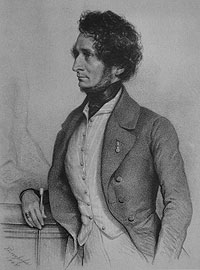
Hector Berlioz in 1845 |
David Cairns explains that young French romantics seized upon Shakespeare as a symbol of their fight for freedom of expression "against the rigidity and life-defying formalism of the academic classical orthodoxy" that ruled established culture, a "convention that seemed to dictate for all time what artists could do." In that light, Julian Rushton attributes Shakespeare's appeal as challenging the tenets of classicism by subjugating form to ideas, rather than mandating that ideas had to fit within conventional form. To Andrew Huth, Shakespeare contradicted everything that the venerable French classical tradition represented – instead of proportion, good taste and the classical unities of time, place and action, "here were wide expanses of time and place, strange subplots and reckless mixtures of genres" and above all a "wide range of human behavior, from the most passionate love to the vilest cruelty, from the sharpest wit to the most complacent stupidity." Alexandre Dumas likened the discovery of Shakespeare to Adam's awakening in the Garden of Eden the first [sic] morning of creation. Indeed, Berlioz called Shakespeare the "supreme creator," second only to God, who revealed the essence and meaning of art and demonstrated its sovereign power. Thus, to his eager young accolytes Shakespeare embraced the entire scope of humanity, and stimulated the utmost reaches of their imagination.
Berlioz soon applied those lessons. As Huth notes, he threw away his chances of winning the coveted Prix de Rome in 1829 by ignoring the stilted, academic form of the prescribed text for the competition oratorio that described the death of Cleopatra, and instead responded to her presumed emotions with violent musical shifts (and prefaced his score with a line from Romeo and Juliet); when reproached for not writing the kind of soothing music the judges expected, he pointed out the absurdity of that approach for a Queen who was dying a painful death in agonies of remorse. (Heard today, La Mort de Cléopâtre transcends its status as a student essay and blows away the dust of formal academia with its violent, melodramatic opening, stormy aria and dark, seething meditation, ending with a sulking whisper.) Berlioz's 1830 Symphonie Fantastique went even further, depicting an opium dream with novel instrumentation, innovative effects and wildly personal departures from traditional symphonic form; it was inspired not only by Shakespeare but by Beethoven, whose symphonies he viewed as instrumental dramas of intense human passion.
Berlioz's next exposure to Romeo and Juliet was in 1831, when he saw Vincenzo Bellini's new opera I Capuleti e i Montecchi but was disappointed that it omitted most of the plot and atmosphere of the play.
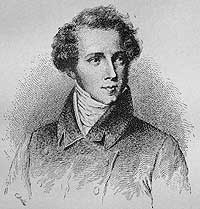
Vincenzo Bellini |
Perhaps Berlioz was unaware that the Bellini opera made no pretense of having anything to do with Shakespeare, but rather derived the two lead characters and the basic incidents of a faked death, lover's despair and suicide from a different source. Bellini's plot is as much one of political intrigue as romance – Romeo wants to marry Guilietta to effect peace between their warring families. Even the conflict in their love scene focuses more on her loyalty to her family than a passionate desire to flee together. The opera has only three other characters – Guilietta's father Capellio, whose son Romeo had killed in battle, his defender Tebaldo, who is to marry Guilietta as a reward for his allegiance, and his advisor Lorenzo who supports Romeo's efforts at reconciliation. To his great credit, after having received the commission a mere seven weeks before the premiere once the intended composer had delayed and finally defaulted, Bellini produced a solid full-length score, full of the lyricism and finely sculpted vocal beauty that typified his brilliant but short career (he died at age 33). His approach was far removed from Berlioz's vision – emotions are heavily stylized and restrained, characters have little psychological depth and even scenes of confrontation and fighting are highly polished, metrical and fundamentally sweet. Curiously, the role of Romeo is sung by a mezzo-soprano (although nowadays tenors often substitute – the role was a favorite of Pavarotti). Yet, within its attenuated scope there are lovely touches, as when Romeo and Tebaldo, working up to another fight, are frozen by the distant sound of Guilietta's funeral procession. While I Capuleti is a fine opera when taken on its own modest terms, it's easy to see why Berlioz couldn't relate to it.
While in a sense the spirit of Shakespeare imbued the expressive scope of all his great work, Berlioz only got to write his own Roméo et Juliette when propelled by an extraordinary stroke of fortune. In 1834, the wildly popular cult celebrity Nicolo Paganini had commissioned Berlioz's second symphony, Harold in Italy, to introduce a new viola he had acquired, but then rejected it for not providing enough virtuoso solo display opportunities. Fatally ill, Paganini finally heard the work in a December 1838 concert and was so overwhelmed that he publicly pronounced Berlioz to be the only true heir to Beethoven and the next day presented him with 20,000 francs (about twice Berlioz's annual earnings as a journalist). In gratitude, Berlioz planned to dedicate his next work to Paganini, who told Berlioz to chose whatever subject he wished.
The subject, of course, was Romeo and Juliet. Freed for the first time in his life from the burden of writing music critiques to earn a living, Berlioz poured himself into the work, which he began on January 24 and completed on September 8, 1839. His librettist anticipated the extraordinary nature of the work as it emerged. On June 21, he wrote: "This is going to be something unique. A libretto for a symphony! An orchestra representing an opera! And thanks to you it will all become something enchanting, while remaining utterly original."
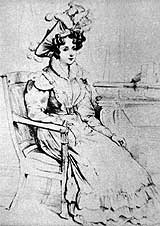
Harriet Smithson |
The customary belief, as expressed by Cairns, is that the failure of Berlioz's 1838 opera Benvenuto Cellini "forced him to cast his next dramatic work in concert form, from which confusion a hybrid resulted – fascinating and beautiful in its parts but incoherent and unsatisfactory in its whole." Yet, Cairns and many others insist that such a view only emerges from those with preconceived notions of the proprieties of established forms and that the work stands on its own, albeit as sui generis. Even so, Berlioz's recent experience with the opera and his 1837 Requiem served to expand the scope of his thought.
The work is written for an orchestra of 100 and a chorus of equal size, of which 14 comprise the prologue and the rest are divided in half, representing the Capulets and Montagues (and arrayed to the left and right for stereophonic impact; Berlioz even suggested that they wear different colored outfits). Although there are three soloists, none represents Romeo or Juliet, who are never heard at all. Indeed, nearly two-thirds of the score is purely instrumental. In his preface, Berlioz insisted that his work was a choral symphony rather than a concert (unstaged) opera or oratorio: "The voices are present almost from the start, but this is to prepare the mind of the audience for the dramatic scenes, when feelings and passions are expressed by the orchestra." He explained that he confided the lead roles to the orchestra, both because he wanted to experiment, since "the greatest composers had produced thousands of duets of this kind," and because "the very sublimity of this love" would be constrained by words, while "instrumental music is richer, more varied, and thanks to its very infiniteness, incomparably more powerful." It's rather ironic, of course, that Berlioz had such reverence for, and was so inspired by, Shakespeare, who expressed these same sensations with words, yet he felt that only without that very text could he create "a new world raised to higher ideal regions [where] one senses [that] the sublime life dreamed by poets becomes reality."
While Berlioz gave descriptive labels to his seven movements and for the first and last used extensive text by Émile Deschamps (based on his outline), those who parse his Roméo et Juliette to assign specific narrative references to each musical phrase tend to miss the point. Berlioz made no effort to try to tell the full story, nor even to embellish the basic narrative with music. Rather, this is a intensely personal reaction of one artist to the play's deeper meaning, for which he drew from Shakespeare those characters and incidents that meant the most to him. Even Berlioz's structures elude conventional analysis – while scholars may tell us that the fourth movement is a scherzo and trio or the fifth a sonata, they just don't register that way, instead impressing with continuous, instinctive, abstract development. Indeed, Sir Hamilton Harty placed Berlioz alongside Mozart as the two great intuitive composers, as distinguished from logical ones.
That, in turn, poses both an opportunity and a challenge. The intense novelty of Berlioz's conception that transcends chronology and mixes materials, moods and styles can be both thrilling, liberating stimulation and a baffling ordeal. As Alan Evans put it, "All of his music inhabits a self-contained realm, dramatically flirting with literary or liturgical themes, brimming with symbolic allusions and his varying psychological states." Or, according to Berlioz himself, Roméo et Juliette "would make known to you the sum of passion that is in the play." If a listener is able and willing to follow the composer's thoroughly subjective quixotic thoughts and emotional reactions, the result works as an enlightening revelation. But if not, then it seems a mere hollow and contrived jumble. Of course, such risks are hardly unique to music – like the best poetry and visual art that suggests rather than states, only those prepared to trust the artist's vision and creative instincts are likely to find their own insight and fulfillment.
 The sprawling structure, to say the least, is novel, subjective and challenging. Thus, for example, Berlioz devotes nearly one-eighth of the total time (a song and an entire movement) to depictions of Queen Mab, a fairy of fanciful dreams, who warrants only a passing soliloquy by Mercutio of a mere 42 lines in the play. But why? Perhaps because to Berlioz this allusion represents the elements of fantasy and jest that Shakespeare wove into even his most profound tragedies, so as to make them an inextricable part of the overall human experience, and thus is an essential part of his conception. The sprawling structure, to say the least, is novel, subjective and challenging. Thus, for example, Berlioz devotes nearly one-eighth of the total time (a song and an entire movement) to depictions of Queen Mab, a fairy of fanciful dreams, who warrants only a passing soliloquy by Mercutio of a mere 42 lines in the play. But why? Perhaps because to Berlioz this allusion represents the elements of fantasy and jest that Shakespeare wove into even his most profound tragedies, so as to make them an inextricable part of the overall human experience, and thus is an essential part of his conception.
The complexity and quirks of Berlioz's personal style inform each of the seven movements:
 Introduction: Fighting – Tumult – Intervention of the Prince; Prologue: Choral Recitative, Strophes, Recitative and Scherzetto. — Both major divisions of the first movement are typical of Berlioz's atypical approach. He begins by thwarting our expectations with an agitated fugue – a venerable form traditionally used to express harmonious melding of related themes, but here nervous, sour and frantic with strife, confusion and off-beat rhythms to suggest the two families' bitter friction that will underscore the plot. Rushton adds that, unlike in a customary fugue, the theme goes nowhere tonally, entrances are in "wrong" keys and it gets overrun by an incongruously jaunty trombone figure that perhaps evokes the cocky arrogance of irresponsible upper-class youth. Next follows a far longer passage of unison brass speaking with nobility, strength and authority, as if the glowering prince were admonishing the errant feuding parties, who offer feeble excuses with occasional fragments of the depleted fugue theme. With that introduction resonating, and indeed informing all that will follow and linking to the end 90 minutes later, Berlioz gets more specific with a vocal prologue that summarizes the story up to the lovers' meeting in a quasi-religious a capella chant only occasionally complemented by harp or orchestral chords and brief interjections of orchestral phrases we will hear again in the next two sections. But then Berlioz interrupts with a seven-minute mezzo-soprano song in praise of love and a fragile call-and-response between tenor and chorus describing Mab, the Fairy Queen, after which the chorus glumly closes with a foretaste of impending tragedy. Thus, the first movement presents in microcosm the overall scheme – the "action" in the orchestra, mere allusions to the actual plot, and lengthy excursions that abandon narrative for character and theme. Introduction: Fighting – Tumult – Intervention of the Prince; Prologue: Choral Recitative, Strophes, Recitative and Scherzetto. — Both major divisions of the first movement are typical of Berlioz's atypical approach. He begins by thwarting our expectations with an agitated fugue – a venerable form traditionally used to express harmonious melding of related themes, but here nervous, sour and frantic with strife, confusion and off-beat rhythms to suggest the two families' bitter friction that will underscore the plot. Rushton adds that, unlike in a customary fugue, the theme goes nowhere tonally, entrances are in "wrong" keys and it gets overrun by an incongruously jaunty trombone figure that perhaps evokes the cocky arrogance of irresponsible upper-class youth. Next follows a far longer passage of unison brass speaking with nobility, strength and authority, as if the glowering prince were admonishing the errant feuding parties, who offer feeble excuses with occasional fragments of the depleted fugue theme. With that introduction resonating, and indeed informing all that will follow and linking to the end 90 minutes later, Berlioz gets more specific with a vocal prologue that summarizes the story up to the lovers' meeting in a quasi-religious a capella chant only occasionally complemented by harp or orchestral chords and brief interjections of orchestral phrases we will hear again in the next two sections. But then Berlioz interrupts with a seven-minute mezzo-soprano song in praise of love and a fragile call-and-response between tenor and chorus describing Mab, the Fairy Queen, after which the chorus glumly closes with a foretaste of impending tragedy. Thus, the first movement presents in microcosm the overall scheme – the "action" in the orchestra, mere allusions to the actual plot, and lengthy excursions that abandon narrative for character and theme.
 Romeo Alone: Sadness – Distant Sounds of Dancing and Music – Festivities at the Capulets — Berlioz himself extracted and often performed the next three movements. Except for a brief choral introduction to the Love Scene, they are purely orchestral and depict the Romantic soul of the work. Some analysts view them as tantamount to a proper symphony, with a variegated opening movement (II), adagio (III), scherzo (IV) and a somber finale (V and VI), all bracketed by a choral introduction (I) and coda (VII). Ian Kemp, though, suggests a different structure of two strands – an outer one (I, V and VII) set in public with the families and Church, and an inner one (II, III, IV and VI) of the lovers' private thoughts. Here, Romeo at first is adrift in thoughts that coalesce into yearning, surges with anticipation as he approaches the Capulet ball, and finally explodes with the splendor and thrill of the dance where he will meet the fulfillment of his dreams. Romeo Alone: Sadness – Distant Sounds of Dancing and Music – Festivities at the Capulets — Berlioz himself extracted and often performed the next three movements. Except for a brief choral introduction to the Love Scene, they are purely orchestral and depict the Romantic soul of the work. Some analysts view them as tantamount to a proper symphony, with a variegated opening movement (II), adagio (III), scherzo (IV) and a somber finale (V and VI), all bracketed by a choral introduction (I) and coda (VII). Ian Kemp, though, suggests a different structure of two strands – an outer one (I, V and VII) set in public with the families and Church, and an inner one (II, III, IV and VI) of the lovers' private thoughts. Here, Romeo at first is adrift in thoughts that coalesce into yearning, surges with anticipation as he approaches the Capulet ball, and finally explodes with the splendor and thrill of the dance where he will meet the fulfillment of his dreams.
 Love Scene: Serene Night – The Capulets' Garden, Silent and Deserted – The Young Capulets Pass on Their Way Home Singing Snatches of the Music of the Ball – Love Scene — Berlioz cited the Love Scene as his favorite work. Love Scene: Serene Night – The Capulets' Garden, Silent and Deserted – The Young Capulets Pass on Their Way Home Singing Snatches of the Music of the Ball – Love Scene — Berlioz cited the Love Scene as his favorite work. 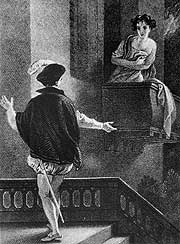 Arturo Toscanini went him one better, calling it "the most beautiful music in the world." Ian Kemp, for one, purports to find detailed correspondences between Berlioz's music and Shakespeare's text, including Juliet's sighs and fears, Romeo's professions and reassurances, and even the Nurse's jarring intrusions into their idyll. Most other scholars tend to insist that the movement eludes analysis or specific depictions but somehow in the course of its twenty minutes conveys with startling efficacy, yet without specific reference, the breathless passion, awkwardness, anxiety and wonder of first love. No matter how familiar, it never fails to work its magic with every hearing. Cairns suggests that Berlioz identified with Romeo and that this music came from an especially deep fount within his own soul. Arturo Toscanini went him one better, calling it "the most beautiful music in the world." Ian Kemp, for one, purports to find detailed correspondences between Berlioz's music and Shakespeare's text, including Juliet's sighs and fears, Romeo's professions and reassurances, and even the Nurse's jarring intrusions into their idyll. Most other scholars tend to insist that the movement eludes analysis or specific depictions but somehow in the course of its twenty minutes conveys with startling efficacy, yet without specific reference, the breathless passion, awkwardness, anxiety and wonder of first love. No matter how familiar, it never fails to work its magic with every hearing. Cairns suggests that Berlioz identified with Romeo and that this music came from an especially deep fount within his own soul.
 Queen Mab, the Dream Fairy (scherzo) — The most frequently performed excerpt, and the one needing the least comment, this fleet, luminous and gossamer confection evokes its mischievous, airborne subject while providing a seminar in brilliantly effective orchestration. Berlioz once commended a successful performance as one in which the orchestra "identifying completely with Shakespeare's exquisite fantasy, made itself so small and fine and nimble" that the queen darted "gleefully among her noiseless harmonies." On this euphoric note, Berlioz brings the joy and ardor of the work to a close. Queen Mab, the Dream Fairy (scherzo) — The most frequently performed excerpt, and the one needing the least comment, this fleet, luminous and gossamer confection evokes its mischievous, airborne subject while providing a seminar in brilliantly effective orchestration. Berlioz once commended a successful performance as one in which the orchestra "identifying completely with Shakespeare's exquisite fantasy, made itself so small and fine and nimble" that the queen darted "gleefully among her noiseless harmonies." On this euphoric note, Berlioz brings the joy and ardor of the work to a close.
 Juliet's Funeral Cortege — As originally conceived and performed, before this movement there was an intermission and then a second prologue in which the small chorus outlined the sad remainder of the tale. Indeed, some separation seems appropriate at this point, where the tone shifts radically. The subject of this entire movement, while certainly implied by the plot, goes beyond the Bard. The Paris production Berlioz had seen was by a touring troupe led by Charles Kemble of an adaptation by David Garrick, who departed from the original in several key respects, including adding a highly theatrical funeral scene that underlines the tragedy. Berlioz, too, couldn't resist the opportunity to depict the nadir of despair before rising toward the culmination. His dirge begins with a mournful orchestral fugue, underlined by persistent choral psalmody that repeats on octave E's "Jetez les fleurs pour la vièrge expirée" ("Strew flowers for the dead maiden"). Their roles then reverse, as the chorus tentatively evolves into melody, perhaps to foreshadow emergence of some constructive enlightenment from the tragedy, while the orchestra accompanies them with implacable sadness and lingers on after the voices depart, in a resolute, inconsolable elegy to the senseless loss of youth and innocence. Juliet's Funeral Cortege — As originally conceived and performed, before this movement there was an intermission and then a second prologue in which the small chorus outlined the sad remainder of the tale. Indeed, some separation seems appropriate at this point, where the tone shifts radically. The subject of this entire movement, while certainly implied by the plot, goes beyond the Bard. The Paris production Berlioz had seen was by a touring troupe led by Charles Kemble of an adaptation by David Garrick, who departed from the original in several key respects, including adding a highly theatrical funeral scene that underlines the tragedy. Berlioz, too, couldn't resist the opportunity to depict the nadir of despair before rising toward the culmination. His dirge begins with a mournful orchestral fugue, underlined by persistent choral psalmody that repeats on octave E's "Jetez les fleurs pour la vièrge expirée" ("Strew flowers for the dead maiden"). Their roles then reverse, as the chorus tentatively evolves into melody, perhaps to foreshadow emergence of some constructive enlightenment from the tragedy, while the orchestra accompanies them with implacable sadness and lingers on after the voices depart, in a resolute, inconsolable elegy to the senseless loss of youth and innocence.
 Romeo at the Capulets' Tomb: Invocation – Juliet's Awakening – Frenzied Joy, Despair, Final Agonies and Death of the Two Lovers — This movement, too, is derived from Garrick's emendations – instead of Juliet rousing from her sleep after Romeo has expired, she awakens just after Romeo poisons himself, thus providing the lovers with a final heartrending scene of farewell. In a startling break from the abstract suggestions of the other instrumental sections, Berlioz's difficult, discontinuous and highly subjective music here seems referential, albeit more hallucinatory than truly descriptive. Critics generally condemned it, but Berlioz had no delusions as to whether it would be popular – he even added the following note to the published score at this point: Romeo at the Capulets' Tomb: Invocation – Juliet's Awakening – Frenzied Joy, Despair, Final Agonies and Death of the Two Lovers — This movement, too, is derived from Garrick's emendations – instead of Juliet rousing from her sleep after Romeo has expired, she awakens just after Romeo poisons himself, thus providing the lovers with a final heartrending scene of farewell. In a startling break from the abstract suggestions of the other instrumental sections, Berlioz's difficult, discontinuous and highly subjective music here seems referential, albeit more hallucinatory than truly descriptive. Critics generally condemned it, but Berlioz had no delusions as to whether it would be popular – he even added the following note to the published score at this point:
The public has no imagination; pieces that only address themselves to the imagination therefore have no public. The following instrumental scene is one and I think it should be eliminated every time this symphony is not given before an elite audience entirely familiar with the tragedy of Shakespeare with Garrick's denouement and with a highly lofty poetic sensibility – that is to say it should be cut 99 times out of 100.
Barzun rejected any attempt to correlate this movement with the narrative content of its title, asserting that its "extraordinarily vivid" phrases "may induce visions in some listeners, but one can safely defy anyone to say what they imitate." 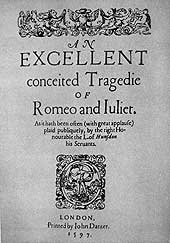 Nonetheless, Cairns presents a compelling description of the intense drama Berlioz depicts: controlled frenzy followed by utter stillness, as chords and long silences seem to listen for any sound; then cold, cavernous solemnity with displaced accents like a heavy heartbeat as Romeo begins to die inside the tomb; Juliet awakening to a pathetic rebirth of the love music struggling to form itself in the void; frenzied and brief joy as fragments of themes from earlier movements shatter and disintegrate; hectic brightness giving the effect of light-headedness, nightmare and imminent collapse; the sublime love theme torn apart, spinning frantically round as if in the distorted memory of a dying brain, clutching at life; and finally annihilation, a violent discord, and then nothingness. Nonetheless, Cairns presents a compelling description of the intense drama Berlioz depicts: controlled frenzy followed by utter stillness, as chords and long silences seem to listen for any sound; then cold, cavernous solemnity with displaced accents like a heavy heartbeat as Romeo begins to die inside the tomb; Juliet awakening to a pathetic rebirth of the love music struggling to form itself in the void; frenzied and brief joy as fragments of themes from earlier movements shatter and disintegrate; hectic brightness giving the effect of light-headedness, nightmare and imminent collapse; the sublime love theme torn apart, spinning frantically round as if in the distorted memory of a dying brain, clutching at life; and finally annihilation, a violent discord, and then nothingness.
 Finale: The Crowd Rushes to the Cemetery – Brawl Between Montagues and Capulets – Friar Lawrence's Recitative and Aria – Oath of Reconciliation — Although the 18-minute finale is by far the most conservative portion of the entire work and the least compelling to modern ears, not surprisingly it received the most plaudits by early critics, who found most of the rest bizarre. Beyond a few interjections by the feuding choruses, outraged over the deaths of their children, and a brief reprise of the opening fugue, the focus is Friar Lawrence, whose dramatic bass aria explains the tragic chain of events and shames the crowd into accepting responsibility and contrition for the outcome of their hatred. To Shakespeare's few final lines Berlioz grafts a five-minute oath of perpetual love, in which all three choruses are heard together for the first and only time, ending on a ringing unison ode of "Amis! Amis pour toujours" ("Friends! Friends forever!"). Yet, to me at least, this all seems too perfunctory – can hearts hardened by centuries of abject bloodshed and hatred really be permanently melted so quickly? True, the sudden transformation is cast in religious terms, as being in deference to Divine will. While the text is utterly unconvincing, Berlioz's music bridges the narrative logical gap to convince us that, at least in the realm of art and thus in our deepest aspirations, something transformative indeed can arise from the evils of the past to promise a future that fulfils the idealistic dreams of untarnished youth. The finale is nothing less than the ultimate vindication and expression of Berlioz's belief in the power of love that inspired both his life and this magnificent work. Finale: The Crowd Rushes to the Cemetery – Brawl Between Montagues and Capulets – Friar Lawrence's Recitative and Aria – Oath of Reconciliation — Although the 18-minute finale is by far the most conservative portion of the entire work and the least compelling to modern ears, not surprisingly it received the most plaudits by early critics, who found most of the rest bizarre. Beyond a few interjections by the feuding choruses, outraged over the deaths of their children, and a brief reprise of the opening fugue, the focus is Friar Lawrence, whose dramatic bass aria explains the tragic chain of events and shames the crowd into accepting responsibility and contrition for the outcome of their hatred. To Shakespeare's few final lines Berlioz grafts a five-minute oath of perpetual love, in which all three choruses are heard together for the first and only time, ending on a ringing unison ode of "Amis! Amis pour toujours" ("Friends! Friends forever!"). Yet, to me at least, this all seems too perfunctory – can hearts hardened by centuries of abject bloodshed and hatred really be permanently melted so quickly? True, the sudden transformation is cast in religious terms, as being in deference to Divine will. While the text is utterly unconvincing, Berlioz's music bridges the narrative logical gap to convince us that, at least in the realm of art and thus in our deepest aspirations, something transformative indeed can arise from the evils of the past to promise a future that fulfils the idealistic dreams of untarnished youth. The finale is nothing less than the ultimate vindication and expression of Berlioz's belief in the power of love that inspired both his life and this magnificent work.
 The premiere was given on November 24, 1839 by Berlioz himself after preparation that included sectional rehearsals, which Holoman cites as an innovation at the time. Also unprecedented outside of opera was an initial flight of three performances, not only to satisfy demand for tickets but to recoup the huge costs of hiring and preparing the required forces. According to the playbill, there were 100 instrumentalists, the three soloists and a chorus of 98 (12 in the prologue, 42 as Capulets and 44 as Montagues, costumed in different colors). The audience was filled with French cultural elite – Balzac called it "the brain of Paris." The premiere was given on November 24, 1839 by Berlioz himself after preparation that included sectional rehearsals, which Holoman cites as an innovation at the time. Also unprecedented outside of opera was an initial flight of three performances, not only to satisfy demand for tickets but to recoup the huge costs of hiring and preparing the required forces. According to the playbill, there were 100 instrumentalists, the three soloists and a chorus of 98 (12 in the prologue, 42 as Capulets and 44 as Montagues, costumed in different colors). The audience was filled with French cultural elite – Balzac called it "the brain of Paris."
Critics were torn. None other than Richard Wagner cited "so many examples of tastelessness and so many artistic blemishes, ranged side by side with passages of pure genius." Stephen Heller presciently observed at the time in his own review that the public claims to want novelty and originality but when confronted with it reacts badly due to their incomplete understanding and tends to blame the artist rather than their own failure to invest the necessary labor to grasp new forms and appreciate innovation. (Jacques Barzin, though, notes that in Berlioz's day most concerts included both vocal and symphonic pieces, and so the synthesis of these elements in a single, evening-length work should not have seemed quite so novel.) More recently, Irving Kolodin asserts that only now, freed from the conventions and rules that governed most music of the past, can we truly appreciate Berlioz's digressions from the expectations of his time (to which might be added that his daring becomes all the more remarkable when compared to those very restrictions, rather than when viewed as part of the huge realm of expression we now take for granted).
In response to adverse criticism, Berlioz immediately began to cut and revise his score, and did so again after the fourth performance. That had to await January 2, 1846 and was Berlioz's first opportunity to hear the work from the audience rather than the podium. 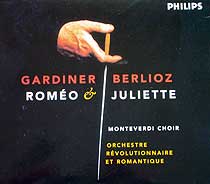 A 1995 recording by John Eliot Gardiner and the Orchestre Révolutionnaire et Romantique (Philips) not only presents a fine performance of the edition that Berlioz ultimately published and that is always heard nowadays, but also includes alternate movements that can be programmed to yield the original version. The most significant is a dramatic 4½-minute second prologue with full orchestral accompaniment that precedes Juliet's funeral procession with an extended preview of all the action that remains; it begins with a clear shift in tone from the romance that impelled the prior section: "Plus de bal maintenant – plus de scènes d'amour! La fête de la mort commence." ("No more dancing now – no more scenes of love! The feast of death begins.") Also added is a brief chanted "requiem aeternam" section before the orchestral epilogue to the funeral procession. Also cut from the final version are instrumental interjections in the first prologue, and some extra lines and music there and in the concluding oath. Berlioz also introduced the three central movements by ending the first prologue with the chorus advising that the orchestra, "seeking an unknown route," will attempt to translate scenes and sights into sound and begging the audience's sympathy to sustain its efforts, which Berlioz later replaced with a grim foretaste of the tragedy ahead that he apparently felt was more appropriate than toadying to his audience. A 1995 recording by John Eliot Gardiner and the Orchestre Révolutionnaire et Romantique (Philips) not only presents a fine performance of the edition that Berlioz ultimately published and that is always heard nowadays, but also includes alternate movements that can be programmed to yield the original version. The most significant is a dramatic 4½-minute second prologue with full orchestral accompaniment that precedes Juliet's funeral procession with an extended preview of all the action that remains; it begins with a clear shift in tone from the romance that impelled the prior section: "Plus de bal maintenant – plus de scènes d'amour! La fête de la mort commence." ("No more dancing now – no more scenes of love! The feast of death begins.") Also added is a brief chanted "requiem aeternam" section before the orchestral epilogue to the funeral procession. Also cut from the final version are instrumental interjections in the first prologue, and some extra lines and music there and in the concluding oath. Berlioz also introduced the three central movements by ending the first prologue with the chorus advising that the orchestra, "seeking an unknown route," will attempt to translate scenes and sights into sound and begging the audience's sympathy to sustain its efforts, which Berlioz later replaced with a grim foretaste of the tragedy ahead that he apparently felt was more appropriate than toadying to his audience.
While audiences and critics at the time could not fully grasp all that Berlioz had poured into his work, later generations more widely hailed its extraordinary value. Even Wagner later claimed to have been transformed and overpowered at the premiere, feeling like a schoolboy in a wholly new world. Indeed, much of Wagner's sprawling operas, with their long self-contained instrumental flights in which the orchestra carries so much of the narrative weight, owe much to Berlioz's untamed imagination.
Berlioz later described his experience of composing Roméo as "floating into a halcyon sea of poetry, wafted onward by the sweet, soft breeze of imagination, warmed by the golden sun of love unveiled by Shakespeare, … confident of my power to reach the magic isle where stands the temple of pure art." John Burke movingly concludes: "No composer has penetrated so deeply, captured so truly the very presence of a Shakespeare tragedy in the alien language of tones."
 After the premiere, the complete Roméo et Juliette was given only six more times during the remaining thirty years of the composer's life. Berlioz himself began conducting excerpts the very next year, and many others have followed. After the premiere, the complete Roméo et Juliette was given only six more times during the remaining thirty years of the composer's life. Berlioz himself began conducting excerpts the very next year, and many others have followed.
Perhaps our most tantalizing glimpse of authenticity is the Roméo seul/Grande Fête section with the Concerts Colonne orchestra led by Gabriel Pierné (Lys CD).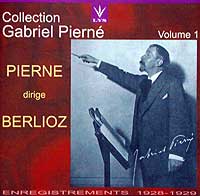 The orchestra's founder, Edward Colonne, had worked with Berlioz and was intimately familiar with the composer's own interpretive style. Among Colonne's 20 recordings, made in 1910, the last year of his life, is a magnificent, although heavily cut, Berlioz Rackoczy March, steadfast but propelled by thrilling brass and tympani accents. Pierné served as Colonne's assistant for seven years and then led the orchestra for another 24 after Colonne's death. His conducting is efficient, modest and unaffected, but his Roméo excerpt, while slow, well-played and plain, is rather mechanical, dutiful and dull, with the heavily compressed dynamics attenuating any subtlety of quiet interplay as well as the excitement of the climactic outbursts. In his Great Conductors survey, Harold Schonberg summarizes Berlioz's own highly influential podium style as rather literal, insisting on thorough rehearsal and adherence to the score (as indeed most composer/conductors tend to do), resulting in supple rhythm within a steady beat, achieving overall logic, proportion and balance, and thus suggesting more interest in outline and pure sound than musical metaphysics. While Pierné appears to exemplify that approach, it seems fair to ask: Is this really how Berlioz intended the most fervent portion of his Roméo to sound? My guess is not. His writings are full of frustration and disparagement of the mediocre orchestras upon which he had to depend to get his works heard, so perhaps he came to settle for no more than mere technical proficiency simply because his experience taught that it was unrealistic to expect more. Yet, nowadays we take basic skill for granted as a mere starting point for the deeper interpretive meaning we seek in the classics. Given a chance, Berlioz might have striven for more inspiration in his own conducting. It's also possible that Pierné just was having a lackluster day, since the same sessions yielded far more dynamic Roman Carnival and Benvenuto Cellini overtures and a Symphonie Fantastique that parlays its unswerving deliberation into unnerving atmosphere. The orchestra's founder, Edward Colonne, had worked with Berlioz and was intimately familiar with the composer's own interpretive style. Among Colonne's 20 recordings, made in 1910, the last year of his life, is a magnificent, although heavily cut, Berlioz Rackoczy March, steadfast but propelled by thrilling brass and tympani accents. Pierné served as Colonne's assistant for seven years and then led the orchestra for another 24 after Colonne's death. His conducting is efficient, modest and unaffected, but his Roméo excerpt, while slow, well-played and plain, is rather mechanical, dutiful and dull, with the heavily compressed dynamics attenuating any subtlety of quiet interplay as well as the excitement of the climactic outbursts. In his Great Conductors survey, Harold Schonberg summarizes Berlioz's own highly influential podium style as rather literal, insisting on thorough rehearsal and adherence to the score (as indeed most composer/conductors tend to do), resulting in supple rhythm within a steady beat, achieving overall logic, proportion and balance, and thus suggesting more interest in outline and pure sound than musical metaphysics. While Pierné appears to exemplify that approach, it seems fair to ask: Is this really how Berlioz intended the most fervent portion of his Roméo to sound? My guess is not. His writings are full of frustration and disparagement of the mediocre orchestras upon which he had to depend to get his works heard, so perhaps he came to settle for no more than mere technical proficiency simply because his experience taught that it was unrealistic to expect more. Yet, nowadays we take basic skill for granted as a mere starting point for the deeper interpretive meaning we seek in the classics. Given a chance, Berlioz might have striven for more inspiration in his own conducting. It's also possible that Pierné just was having a lackluster day, since the same sessions yielded far more dynamic Roman Carnival and Benvenuto Cellini overtures and a Symphonie Fantastique that parlays its unswerving deliberation into unnerving atmosphere.
To my ears, the most exciting Roméo excerpt on record was the very first,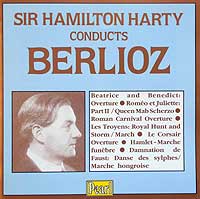 led by Sir Hamilton Harty (Pearl CD) with an unparalleled sense of abandon that evokes the quality of intuition he so admired in Berlioz. His 1927 Queen Mab Scherzo is with the Hallé Orchestra, named for and created by a friend and early champion of the composer who was familiar with his interpretive style and thus provides a rare link to Berlioz himself. Possibly reflecting deficiencies of early electrical recording, the wind accompaniment tends to swamp the delicate string melodic figurations, whose pizzicatos, in turn, are overbearingly prominent. Typical of Harty's interpretive daring, the end is sheer magic, as a wild acceleration recalls the end of Mercutio's scherzetto when the cock crows, dawn breaks and Mab flees like lightning into thin air. No sonic allowance need be made for his stunning 1933 second movement with the London Philharmonic, which constantly quivers with natural but unbridled feeling, The ball itself has never been so thrillingly rendered – buoyant and breathtakingly fast (and this was not an artifact of the technology to cram as much music as possible onto a 78 rpm side, as its 11 minutes stretch over four sides, which would have left plenty of room for slower tempos). led by Sir Hamilton Harty (Pearl CD) with an unparalleled sense of abandon that evokes the quality of intuition he so admired in Berlioz. His 1927 Queen Mab Scherzo is with the Hallé Orchestra, named for and created by a friend and early champion of the composer who was familiar with his interpretive style and thus provides a rare link to Berlioz himself. Possibly reflecting deficiencies of early electrical recording, the wind accompaniment tends to swamp the delicate string melodic figurations, whose pizzicatos, in turn, are overbearingly prominent. Typical of Harty's interpretive daring, the end is sheer magic, as a wild acceleration recalls the end of Mercutio's scherzetto when the cock crows, dawn breaks and Mab flees like lightning into thin air. No sonic allowance need be made for his stunning 1933 second movement with the London Philharmonic, which constantly quivers with natural but unbridled feeling, The ball itself has never been so thrillingly rendered – buoyant and breathtakingly fast (and this was not an artifact of the technology to cram as much music as possible onto a 78 rpm side, as its 11 minutes stretch over four sides, which would have left plenty of room for slower tempos).
Among several sets of the "standard" orchestral excerpts,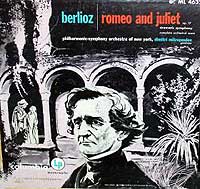 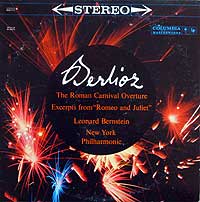 Dimitri Mitropoulos and the New York Philharmonic (Columbia LP, 1951; EMI CD) enliven the love scene with impulsive and throbbing desire, hugely varied pacing and an ending of suspended breadth. Their Roméo Alone/Grande Fête sequence builds with wonderful control to a restrained ending that foretells the coming tragedy. As nice bonuses, they include the opening fugue and princely intervention, plus a strikingly frantic tomb scene that ends the set on a note of searching disquiet. Mitropoulos's successor at the helm of the New York Philharmonic, Leonard Bernstein, led the same orchestra in a stereo set (Sony CD, 1959). Their Mab scherzo is solid, earthy and lusty, and manages to enchant without the customary gauzy filigree. The fireworks on the original LP cover clearly refer to the companion Roman Carnival Overture yet seem appropriate here as well – overall, the ardent and thoroughly heartfelt readings suggest that, had Bernstein recorded the entire score, it would have been truly sensational (and Mitropoulos's, for that matter, would have been charged with seat-edge tension). Dimitri Mitropoulos and the New York Philharmonic (Columbia LP, 1951; EMI CD) enliven the love scene with impulsive and throbbing desire, hugely varied pacing and an ending of suspended breadth. Their Roméo Alone/Grande Fête sequence builds with wonderful control to a restrained ending that foretells the coming tragedy. As nice bonuses, they include the opening fugue and princely intervention, plus a strikingly frantic tomb scene that ends the set on a note of searching disquiet. Mitropoulos's successor at the helm of the New York Philharmonic, Leonard Bernstein, led the same orchestra in a stereo set (Sony CD, 1959). Their Mab scherzo is solid, earthy and lusty, and manages to enchant without the customary gauzy filigree. The fireworks on the original LP cover clearly refer to the companion Roman Carnival Overture yet seem appropriate here as well – overall, the ardent and thoroughly heartfelt readings suggest that, had Bernstein recorded the entire score, it would have been truly sensational (and Mitropoulos's, for that matter, would have been charged with seat-edge tension).
The first full recording of Roméo et Juliette was fortunate,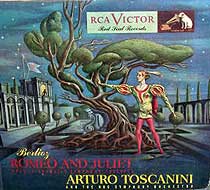 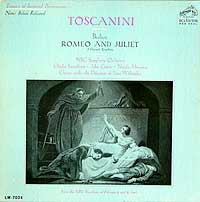 although it came from an unlikely source. Hardly known for his pioneering repertoire toward the end of his career, in 1942 Arturo Toscanini gave the first 20th century North American performance of the full work with the New York Philharmonic, and then followed with the NBC Symphony in two 1947 broadcasts. Typical of the work's concert history, only his bland studio recording the next day of the second and third movements was issued on disc, but finally in 1965 RCA released the entire broadcast concert. It remains a wonderful account. At the opposite end of the interpretive spectrum from Harty, Toscanini lets the inherent drama of the music speak for itself with an intensely focused and thoroughly committed reading shorn of any extrinsic personality. Nicola Moscona sings a magnificent Friar Lawrence, thoroughly convincing in the hugely demanding role as the stentorian moral anchor somehow able to lead an entire community from warfare to harmony in a matter of minutes. Toscanini's son recalled that his father doted on Berlioz and collected for his personal library every edition he could find of writings by and about Berlioz. His ultimate gift to posterity is this recording, which pulses with his lifelong love, deep affection and profound respect for all that Roméo represents. although it came from an unlikely source. Hardly known for his pioneering repertoire toward the end of his career, in 1942 Arturo Toscanini gave the first 20th century North American performance of the full work with the New York Philharmonic, and then followed with the NBC Symphony in two 1947 broadcasts. Typical of the work's concert history, only his bland studio recording the next day of the second and third movements was issued on disc, but finally in 1965 RCA released the entire broadcast concert. It remains a wonderful account. At the opposite end of the interpretive spectrum from Harty, Toscanini lets the inherent drama of the music speak for itself with an intensely focused and thoroughly committed reading shorn of any extrinsic personality. Nicola Moscona sings a magnificent Friar Lawrence, thoroughly convincing in the hugely demanding role as the stentorian moral anchor somehow able to lead an entire community from warfare to harmony in a matter of minutes. Toscanini's son recalled that his father doted on Berlioz and collected for his personal library every edition he could find of writings by and about Berlioz. His ultimate gift to posterity is this recording, which pulses with his lifelong love, deep affection and profound respect for all that Roméo represents.
Charles Munch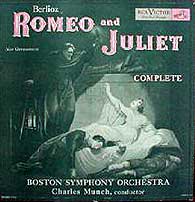 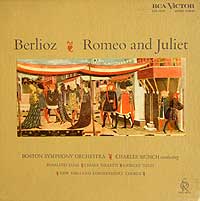 was the first to record nearly all of Berlioz's major works – not just the Symphonie Fantastique, Harold in Italy and the overtures, but the Requiem, Damnation of Faust, L'Enfance de Christ – and Roméo. Indeed, he was the first to record the complete Roméo twice – in 1953 and again in 1962, both with the Boston Symphony and for RCA. While the performances are strikingly similar, the second is generally preferred for its richer stereo sound and, in its original incarnation, for its lavish Soria presentation with a profusely illustrated brochure. Although his timings are nearly identical to Toscanini's (and in fact are over a minute faster overall), Munch gives an impression of being far more deliberate, largely due to his more blended approach, which tends to integrate the disparate elements into a more continuous sweep, and his more reverberant acoustic, which suggests enactment of a religious rite (and that, in turn, helps to conceal the awkwardness of the pious final text). While much sheer beauty is gained in the strophes, love music and funeral procession, the sense of elemental emotion and youthful discovery (both the lovers' and the composer's) tends to be curtailed. Overall, Munch presents a Roméo of classical sensibility and romantic texture that stresses the sheer nobility and logical outcome of the story's moral foundation rather than the psychodrama of life in all its confusion. was the first to record nearly all of Berlioz's major works – not just the Symphonie Fantastique, Harold in Italy and the overtures, but the Requiem, Damnation of Faust, L'Enfance de Christ – and Roméo. Indeed, he was the first to record the complete Roméo twice – in 1953 and again in 1962, both with the Boston Symphony and for RCA. While the performances are strikingly similar, the second is generally preferred for its richer stereo sound and, in its original incarnation, for its lavish Soria presentation with a profusely illustrated brochure. Although his timings are nearly identical to Toscanini's (and in fact are over a minute faster overall), Munch gives an impression of being far more deliberate, largely due to his more blended approach, which tends to integrate the disparate elements into a more continuous sweep, and his more reverberant acoustic, which suggests enactment of a religious rite (and that, in turn, helps to conceal the awkwardness of the pious final text). While much sheer beauty is gained in the strophes, love music and funeral procession, the sense of elemental emotion and youthful discovery (both the lovers' and the composer's) tends to be curtailed. Overall, Munch presents a Roméo of classical sensibility and romantic texture that stresses the sheer nobility and logical outcome of the story's moral foundation rather than the psychodrama of life in all its confusion.
Of the conductors who recorded the full Roméo, Pierre Monteux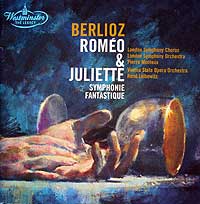 had the strongest Berlioz credentials. Before his tenure at the Ballet Russes, where he sprang to fame by preparing and giving the world premieres of Daphnis et Chloé, Petrouchka and the notorious Rite of Spring, he began his career as a violist in the Concerts Colonne for 13 years, where he absorbed Berlioz's style from a prime exponent, and then cemented the association by conducting that ensemble for another six. Toward the end of his astoundingly long career, at age 83 Monteux led a Roméo for the Westminster label that seems to exemplify Berlioz's own outlook – but only in the sense of style, as some of the instrumental playing from the London Symphony Orchestra is unruly. The vocal prelude to the love scene is vivid and involving, and the tomb scene is especially impressive – pure music with just enough enthusiasm to animate it into evoking a colloquial conversation rather than a random jumble of the composer's abstract, detached ideas that emerges as quite moving without lapsing into melodrama. While perhaps the least distinctive of the classic Roméo recordings, Monteux's not only may suggest the composer's performing style but also reflects his own reputation for lyrical grace in a wide variety of repertoire, especially suited to a work offering such a wide variety of moods and techniques. had the strongest Berlioz credentials. Before his tenure at the Ballet Russes, where he sprang to fame by preparing and giving the world premieres of Daphnis et Chloé, Petrouchka and the notorious Rite of Spring, he began his career as a violist in the Concerts Colonne for 13 years, where he absorbed Berlioz's style from a prime exponent, and then cemented the association by conducting that ensemble for another six. Toward the end of his astoundingly long career, at age 83 Monteux led a Roméo for the Westminster label that seems to exemplify Berlioz's own outlook – but only in the sense of style, as some of the instrumental playing from the London Symphony Orchestra is unruly. The vocal prelude to the love scene is vivid and involving, and the tomb scene is especially impressive – pure music with just enough enthusiasm to animate it into evoking a colloquial conversation rather than a random jumble of the composer's abstract, detached ideas that emerges as quite moving without lapsing into melodrama. While perhaps the least distinctive of the classic Roméo recordings, Monteux's not only may suggest the composer's performing style but also reflects his own reputation for lyrical grace in a wide variety of repertoire, especially suited to a work offering such a wide variety of moods and techniques.
Like Berlioz, Pierre Boulez is not only a French conductor but a hugely influential composer in the forefront of musical innovation of his time.  Thus, his respect and affinity for Berlioz is hardly surprising (nor is his antipathy for Brahms, Tchaikovsky and other traditionalists, which alienated many subscribers when he succeeded Bernstein as music director of the New York Philharmonic). His first Berlioz recording, of the Fantastique in 1967, was dismissed as cold and literal, although its measured, resolute seven-minute (without repeats) "March to the Scaffold" and 11½-minute "Dream of a Sabbath Night" were truly chilling and served to prove the inherent emotional value of Berlioz's brilliant and daring instrumentation. In a 1997 interview for his remake of the Fantastique with the Cleveland Orchestra, Boulez claimed to have no interest in the content, but rather only in Berlioz's tone color and treatment of the orchestra. His Roméo, with the Cleveland Orchestra (2000, DG) emphasizes this factor, as the balances are extremely well-defined and exhibit the composer's wisdom and skill to the fullest, especially in the central orchestral movements. Yet, although many consider Boulez to be a literalist, compared to Toscanini's reading there's a surprising amount of warmth and repose throughout, even while giving full measure to such disquieting touches as braying horns and a frightening loud bass drum in the "Mab scherzo," which emerge with a special intensity from the recording's resonant mid-range concert-hall sonority. Overall, Boulez adheres to a meticulous reading of the score, including its full volume range from ff to pppp (unlike Monteux, who tended to overlook the score's dynamic markings), but he does add acceleration to bring movements to a stirring close. While Roméo's 90+ minutes nicely filled a double LP set, they're rather chintzy for two CDs; Boulez's is one of the few CD sets to offer a bonus, in this case a rather dry reading of Berlioz's half-hour song cycle Nuits d'Été (Summer Nights). (The current DG incarnation of the Monteux has an even more substantial, if less appealing, filler – a slipshod rendition of the Fantastique [not by Monteux].) Thus, his respect and affinity for Berlioz is hardly surprising (nor is his antipathy for Brahms, Tchaikovsky and other traditionalists, which alienated many subscribers when he succeeded Bernstein as music director of the New York Philharmonic). His first Berlioz recording, of the Fantastique in 1967, was dismissed as cold and literal, although its measured, resolute seven-minute (without repeats) "March to the Scaffold" and 11½-minute "Dream of a Sabbath Night" were truly chilling and served to prove the inherent emotional value of Berlioz's brilliant and daring instrumentation. In a 1997 interview for his remake of the Fantastique with the Cleveland Orchestra, Boulez claimed to have no interest in the content, but rather only in Berlioz's tone color and treatment of the orchestra. His Roméo, with the Cleveland Orchestra (2000, DG) emphasizes this factor, as the balances are extremely well-defined and exhibit the composer's wisdom and skill to the fullest, especially in the central orchestral movements. Yet, although many consider Boulez to be a literalist, compared to Toscanini's reading there's a surprising amount of warmth and repose throughout, even while giving full measure to such disquieting touches as braying horns and a frightening loud bass drum in the "Mab scherzo," which emerge with a special intensity from the recording's resonant mid-range concert-hall sonority. Overall, Boulez adheres to a meticulous reading of the score, including its full volume range from ff to pppp (unlike Monteux, who tended to overlook the score's dynamic markings), but he does add acceleration to bring movements to a stirring close. While Roméo's 90+ minutes nicely filled a double LP set, they're rather chintzy for two CDs; Boulez's is one of the few CD sets to offer a bonus, in this case a rather dry reading of Berlioz's half-hour song cycle Nuits d'Été (Summer Nights). (The current DG incarnation of the Monteux has an even more substantial, if less appealing, filler – a slipshod rendition of the Fantastique [not by Monteux].)
Another conductor with impressive French credentials is Swiss-born Charles Dutoit. 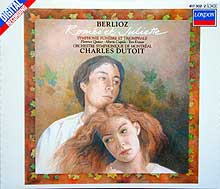 His 1985 Roméo with the Montreal Symphony, which he led for 25 years (London), is perhaps the most French-sounding of all – smooth but not blurry, tasteful but never dull, lush but by no means drowsy. Above all, it's intensely musical, radiating self-confidence and inner peace. The pace is set at the outset following the introductory string fugue, as the brass oration emerges as assertive but not overbearing, strong but never threatening. Romeo Alone gains huge inertia by building naturally and repressing any outward emotion until exploding for the final climax. The love scene arises from the depths with extraordinarily strong bass support. The fantasy of the Mab scherzo emerges effortlessly from its moderate tempo and fully balanced sonorities. Juliet's cortege throbs with unearthly numbness, the tomb scene boasts meltingly beautiful horns and the finale relies on vocals and strings, saving the brass to sustain the very end. The Tudor Singers of Montreal keep the choral portions light and diffident. Only the solos disappoint, too assertive and forthright for the brilliantly played and deeply atmospheric orchestral textures. The generous and logical filler is Berlioz's fourth and final symphony, the 35-minute 1840 Symphonie funèbre et triomphale, but for me even Dutoit's intense and committed reading can't fully transcend the vapid bombast of this ceremonial outdoor processional pièce d'occasion to bear the remains of heroes of the 1830 revolution to a new monument. His 1985 Roméo with the Montreal Symphony, which he led for 25 years (London), is perhaps the most French-sounding of all – smooth but not blurry, tasteful but never dull, lush but by no means drowsy. Above all, it's intensely musical, radiating self-confidence and inner peace. The pace is set at the outset following the introductory string fugue, as the brass oration emerges as assertive but not overbearing, strong but never threatening. Romeo Alone gains huge inertia by building naturally and repressing any outward emotion until exploding for the final climax. The love scene arises from the depths with extraordinarily strong bass support. The fantasy of the Mab scherzo emerges effortlessly from its moderate tempo and fully balanced sonorities. Juliet's cortege throbs with unearthly numbness, the tomb scene boasts meltingly beautiful horns and the finale relies on vocals and strings, saving the brass to sustain the very end. The Tudor Singers of Montreal keep the choral portions light and diffident. Only the solos disappoint, too assertive and forthright for the brilliantly played and deeply atmospheric orchestral textures. The generous and logical filler is Berlioz's fourth and final symphony, the 35-minute 1840 Symphonie funèbre et triomphale, but for me even Dutoit's intense and committed reading can't fully transcend the vapid bombast of this ceremonial outdoor processional pièce d'occasion to bear the remains of heroes of the 1830 revolution to a new monument.
Colin Davis and the London Symphony 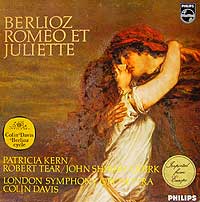 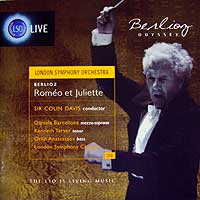 embarked on a Berlioz cycle in 1968 to commemorate the centenary of the composer's death that included not only the pieces Munch had traversed, but also the less engaging Symphonie Funèbre et Triomphale and (with Covent Garden forces) the first studio recording of Berlioz's final work (which the composer never got to hear) – the sprawling four-hour epic opera Les Troyens. All were hailed at the time as well-nigh definitive, and indeed, they remain superbly satisfying, with a buoyant, crisp, light Mozartean texture. In 2000, conductor and orchestra launched a second Berlioz cycle, this time of live concert recordings on the budget LSO Live label, beginning with a Roméo et Juliette that complements their first with somewhat more repose (about eight minutes slower overall) and a more mellow sonority. Perhaps the two Davis recordings serve to paint an appropriate portrait of the composer at the time he wrote Roméo – on the cusp between the vigor of youth and the deliberation of maturity. And perhaps it's the ultimate compliment to Davis and the LSO to disclaim any effort at characterizing their two achievements any further, other than to note that both of their performances are wholly convincing and equally valid without suggesting any overlay of extrinsic interpretive input. embarked on a Berlioz cycle in 1968 to commemorate the centenary of the composer's death that included not only the pieces Munch had traversed, but also the less engaging Symphonie Funèbre et Triomphale and (with Covent Garden forces) the first studio recording of Berlioz's final work (which the composer never got to hear) – the sprawling four-hour epic opera Les Troyens. All were hailed at the time as well-nigh definitive, and indeed, they remain superbly satisfying, with a buoyant, crisp, light Mozartean texture. In 2000, conductor and orchestra launched a second Berlioz cycle, this time of live concert recordings on the budget LSO Live label, beginning with a Roméo et Juliette that complements their first with somewhat more repose (about eight minutes slower overall) and a more mellow sonority. Perhaps the two Davis recordings serve to paint an appropriate portrait of the composer at the time he wrote Roméo – on the cusp between the vigor of youth and the deliberation of maturity. And perhaps it's the ultimate compliment to Davis and the LSO to disclaim any effort at characterizing their two achievements any further, other than to note that both of their performances are wholly convincing and equally valid without suggesting any overlay of extrinsic interpretive input.
Of other complete recordings of the Berlioz Roméo, I would note four more that, while without the historical import or unique touches that characterize the others, with one exception present the score well and thus serve to warrant that what you hear is Berlioz, rather than the conductors' or soloists' personal indulgences:
- The Vienna Philharmonic conducted by Lorin Maazel (London, 1973) – Typical of this group,
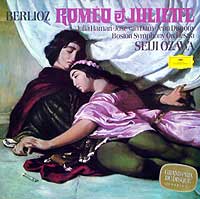 Maazel treads a thin line between being carefully-balanced, undemanding and well-groomed on the one hand and somewhat bland and uninvolving on the other. The Ball section of the second movement seems the most engaging – crisp rhythms, braying off-beat brass accents, insistent tympani downbeats and especially prominent accompanying figures that compel attention. The rest, though seems rather generic. Maazel treads a thin line between being carefully-balanced, undemanding and well-groomed on the one hand and somewhat bland and uninvolving on the other. The Ball section of the second movement seems the most engaging – crisp rhythms, braying off-beat brass accents, insistent tympani downbeats and especially prominent accompanying figures that compel attention. The rest, though seems rather generic.
- The Boston Symphony conducted by Seiji Ozawa (DG, 1976) – Ozawa presents the score directly and effectively, with a number of thoughtful and appropriate touches. The diaphanous melody of the Queen Mab scherzo is often swamped beneath crude blasts of accompaniment, adding a touch of the grotesque to the usual aura of fairy dust. The jarring discontinuity of the first movement brass orations and the tomb scene are propelled with momentum that respects their musical essence while integrating them into the overall narrative thrust. Two highlights – the funeral cortege is so fleet (a full minute less than the Toscanini standard) that it seems more wistful and thought-provoking than sorrowful or tragic, and the strophes (sung by Julia Hamari, who outshines all her far more famed rivals in the role) – light, with minimal vibrato, full of suppressed ardor and more than a tinge of regret of the misfortune to come.
- The Berlin Philharmonic conducted by James Levine (DG, 1988) –
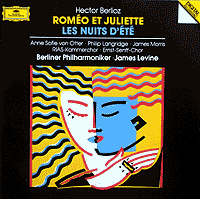 The strikingly bold, modern cover isn't really reflected in the performance – rich, smooth "big band" Berlioz, yet with considerable attention to dynamics and a lustrous atmosphere that creates powerful imagery and perhaps reflects the composer's own oft-expressed desire for a larger complement of performers than was economically feasible. The sheer opulence of the sonics enables Romeo Alone and the love scene to build movingly and convincingly, with a natural logical flow. While Berlioz took great pains to insist that his Roméo wasn't an opera, as would be expected from a seasoned and acclaimed opera conductor like Levine, the solo singing is superb and the final scene with Père Laurence (sung by James Morris) would do honor to any staged production. Especially wondrous is mezzo Anne Sophie von Otter, both in the strophes and a magnificent bonus Nuits d'Été. The strikingly bold, modern cover isn't really reflected in the performance – rich, smooth "big band" Berlioz, yet with considerable attention to dynamics and a lustrous atmosphere that creates powerful imagery and perhaps reflects the composer's own oft-expressed desire for a larger complement of performers than was economically feasible. The sheer opulence of the sonics enables Romeo Alone and the love scene to build movingly and convincingly, with a natural logical flow. While Berlioz took great pains to insist that his Roméo wasn't an opera, as would be expected from a seasoned and acclaimed opera conductor like Levine, the solo singing is superb and the final scene with Père Laurence (sung by James Morris) would do honor to any staged production. Especially wondrous is mezzo Anne Sophie von Otter, both in the strophes and a magnificent bonus Nuits d'Été.
- The Philadelphia Orchestra conducted by Riccardo Muti (EMI, 1986) – While perhaps the smoothest and most beautifully played of all Roméo recordings, this one lacks something essential – even a hint of the work's underlying revolutionary zeal. Thus, the brass chords that shut down the opening fugue lack any sense of challenge or authority, and even the love music emerges as trivial and light, shorn of its intrinsic shades of doubt and flashes of conflicting emotions.
 Berlioz was hardly the only composer captivated by Romeo and Juliet. Those that followed produced a grand opera, an orchestral tone-poem, a full-length ballet and a Broadway musical, all masterworks of their diverse genres. Berlioz was hardly the only composer captivated by Romeo and Juliet. Those that followed produced a grand opera, an orchestral tone-poem, a full-length ballet and a Broadway musical, all masterworks of their diverse genres.
Like the Bellini opera Berlioz had seen, Charles Gounod's 1864 Roméo et Juliette was a lyrical and lovely entertainment, although, unlike his predecessor's, it followed the Shakespearean treatment of the tale while,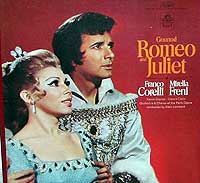 as with Berlioz, emphasizing the portions that seemed most suitable for the composer's purpose, in this case as enchanting and soaring music. Even so, it recounts the basic story intact, rather than offering a highly personal reflection on salient themes – Act I is the Capulet ball where Romeo meets Juliet, Act II their balcony scene, Act III their secret wedding and a street fight in which Romeo kills Tybalt, Juliet's intended, Act IV the lovers' farewell, Friar Laurence's giving Juliet the sleeping potion and (with the requisite ballet) her lavish preparations to hastily marry Paris in Tybalt's stead, and Act V the final meeting and deaths at the Capulet tomb. As Robert T. Jones noted, both Bellini and Gounod ignored the subtleties, melted down the characters into stereotypes, and concentrated their energies on providing lots of gorgeous music for the two lovers; yet far from bowdlerizing the original, they worked within the traditions of their time. Although a grand opera, Gounod's version has some striking parallels with Berlioz's symphony – in the first act alone, the brief overture uses a fugue to depict the fighting clans, the opening number recites the setting with full choral chanting, and Mercutio's Mab aria evokes Berlioz's quicksilver accompaniment. Indeed, as a conservatory student of 21, Gounod had slipped into Berlioz's rehearsals for his Roméo et Juliette and had become enthralled. Yet, despite these points of possible influence, the overall impact is far more trendy, culminating in a final act in which (consistent with the Kemble adaptation) the lovers have an extended high-energy duet before suddenly expiring, at which point the opera ends on a note of personal loss, omitting altogether both Shakespeare's and Berlioz's broader thematic emphases upon communal reconciliation. There are many lovely touches – the lovers' first meeting is tentative, with hints of impending doom, the libretto (by Jules Barbier and Michel Carré) is full of clever rhymes, and Juliet's Act I arietta is a coloratura marvel. as with Berlioz, emphasizing the portions that seemed most suitable for the composer's purpose, in this case as enchanting and soaring music. Even so, it recounts the basic story intact, rather than offering a highly personal reflection on salient themes – Act I is the Capulet ball where Romeo meets Juliet, Act II their balcony scene, Act III their secret wedding and a street fight in which Romeo kills Tybalt, Juliet's intended, Act IV the lovers' farewell, Friar Laurence's giving Juliet the sleeping potion and (with the requisite ballet) her lavish preparations to hastily marry Paris in Tybalt's stead, and Act V the final meeting and deaths at the Capulet tomb. As Robert T. Jones noted, both Bellini and Gounod ignored the subtleties, melted down the characters into stereotypes, and concentrated their energies on providing lots of gorgeous music for the two lovers; yet far from bowdlerizing the original, they worked within the traditions of their time. Although a grand opera, Gounod's version has some striking parallels with Berlioz's symphony – in the first act alone, the brief overture uses a fugue to depict the fighting clans, the opening number recites the setting with full choral chanting, and Mercutio's Mab aria evokes Berlioz's quicksilver accompaniment. Indeed, as a conservatory student of 21, Gounod had slipped into Berlioz's rehearsals for his Roméo et Juliette and had become enthralled. Yet, despite these points of possible influence, the overall impact is far more trendy, culminating in a final act in which (consistent with the Kemble adaptation) the lovers have an extended high-energy duet before suddenly expiring, at which point the opera ends on a note of personal loss, omitting altogether both Shakespeare's and Berlioz's broader thematic emphases upon communal reconciliation. There are many lovely touches – the lovers' first meeting is tentative, with hints of impending doom, the libretto (by Jules Barbier and Michel Carré) is full of clever rhymes, and Juliet's Act I arietta is a coloratura marvel.
Much as Berlioz's Roméo et Juliette transcended the established range of a symphony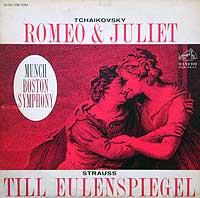 and largely eschewed an attempt to depict the events of the plot, Tchaikovsky's Romeo and Juliet "fantasy overture" was more of an abstract meditation on the underlying premise of love arising from disorder and struggling to remain above social demands. For this, one of Tchaikovsky's earliest works (written in 1869, and substantially revised in 1870 and 1880), not only the idea but the outline and opening were suggested by Mily Balakirev, possibly to lure the young composer to join the cause championed by The Five, his circle of ardent Russian nationalists. The notion of conflicted love also may have appealed to Tchaikovsky, whose courtship of the singer Desirée Artôt had just failed, and who was beginning his lifelong struggle with homosexuality, a cardinal sin in Czarist Russia. The two primary ingredients of the rival families' frenzied feuding and the lovers' ardent innocence were ideally suited to generate the contrasting thematic groups of a sonata structure, and indeed the work is cast in that form, with traditional exposition, development and recapitulation, preceded by a lengthy chorale-like introduction in which Friar Lawrence's piety begins to cloud over, and a coda in which echoes of love linger among social homilies. Notably, Tchaikovsky's handling of these materials suggests a personal attitude – his jagged conflict theme and soaring love theme seem inextricably tied together, as if to suggest that they are inseparably bound up in an eternal cycle – love is destined to be torn by conflict, and conflict will be united by love. and largely eschewed an attempt to depict the events of the plot, Tchaikovsky's Romeo and Juliet "fantasy overture" was more of an abstract meditation on the underlying premise of love arising from disorder and struggling to remain above social demands. For this, one of Tchaikovsky's earliest works (written in 1869, and substantially revised in 1870 and 1880), not only the idea but the outline and opening were suggested by Mily Balakirev, possibly to lure the young composer to join the cause championed by The Five, his circle of ardent Russian nationalists. The notion of conflicted love also may have appealed to Tchaikovsky, whose courtship of the singer Desirée Artôt had just failed, and who was beginning his lifelong struggle with homosexuality, a cardinal sin in Czarist Russia. The two primary ingredients of the rival families' frenzied feuding and the lovers' ardent innocence were ideally suited to generate the contrasting thematic groups of a sonata structure, and indeed the work is cast in that form, with traditional exposition, development and recapitulation, preceded by a lengthy chorale-like introduction in which Friar Lawrence's piety begins to cloud over, and a coda in which echoes of love linger among social homilies. Notably, Tchaikovsky's handling of these materials suggests a personal attitude – his jagged conflict theme and soaring love theme seem inextricably tied together, as if to suggest that they are inseparably bound up in an eternal cycle – love is destined to be torn by conflict, and conflict will be united by love. 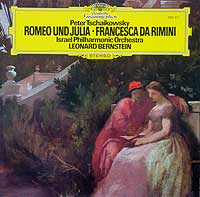 (While the ending is largely peaceful, his final page slaps on an insistent assertive concluding cadence that seems ambivalent – it does bring the piece to a triumphant conclusion, yet it sounds lacking in conviction, as if to end in doubt rather than an affirmation of love's domination. Stokowski, for one, omits the final climax in his recordings, letting the piece end in solemn reflection.) Jonathan Kramer suggests that Tchaikovsky teases us by withholding a full orchestral statement of his magnificent love theme until nearly the very end. But even then, it quickly subsides into confusion and anguish, thus perhaps reflecting Tchaikovsky's frustrating personal quest for a meaningful relationship of his own. (While the ending is largely peaceful, his final page slaps on an insistent assertive concluding cadence that seems ambivalent – it does bring the piece to a triumphant conclusion, yet it sounds lacking in conviction, as if to end in doubt rather than an affirmation of love's domination. Stokowski, for one, omits the final climax in his recordings, letting the piece end in solemn reflection.) Jonathan Kramer suggests that Tchaikovsky teases us by withholding a full orchestral statement of his magnificent love theme until nearly the very end. But even then, it quickly subsides into confusion and anguish, thus perhaps reflecting Tchaikovsky's frustrating personal quest for a meaningful relationship of his own.
Tchaikovsky's Romeo and Juliet is hugely popular, and it's hard to find a dull recording. The music is so inherently emotionally charged and the melodies so compelling that any moderately competent performance is bound to convey its essence. It also works at extremes of both tempo, from the breathless Munch (17 minutes – Boston Symphony, 1958, RCA LP) to the sprawling leisure of Celibidache (28 – Munich Philharmonic, 1992, EMI CD), and inflection, from the snarling Toscanini (NBC Symphony, 1946, BMG CD), feverish Rodzinsky (Cleveland Orchestra, 1940, Lys CD) and emphatic Bernstein (NY Philharmonic, 1957, Sony CD) to the mellow musing of Celibidache and Bernstein's autumnal remake (NY Philharmonic, 1989, DG).
After returning to Russia from over a decade abroad, one of Sergei Prokofiev's first major projects was a full-length Romeo and Juliet ballet. 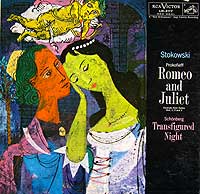 Seemingly a radical departure from his reputation for spiky scores and percussive pianism, perhaps it reflected not only a growing maturity but a shift in Soviet taste from revolutionary daring to classicism. Prokofiev later attributed the work to his own interest in lyricism and the Russian fondness for long entertainments that consume an entire evening. Its birth was difficult – it was rejected in turn by three major theatres that had agreed to produce it and was finally mounted in Czechoslovakia in 1938. In the process, it underwent substantial change, and not only refinement – the original ending was a happy one in which the lovers unite; as Prokofiev later noted somewhat wryly, this was more a practical than a creative issue, as dead people can't dance – but when he was told that his music wasn't genuinely joyous anyway, he restored the tragic ending. In its final form, the music is over 2½ hours long ( to which a performance would add another hour for intermissions between the four acts) and its 52 separate numbers comprise a remarkable range of moods and styles. While his predecessors all expressed the variegated emotions of the story (which the ballet follows rather closely, albeit with ample opportunity for danced expression), Prokofiev underlined the shifting moods and characters far more sharply, from the ravishing opening phrase, the eager grace of Juliet's introduction and the careening mischievousness of Mercutio to the clanging metal of the families' fight and grinding dissonance of Tybalt's death. Among the many fine recordings of the full score are those of Lorin Maazel and the Cleveland Orchestra (1973, Decca), Andre Previn and the London Symphony (1973, EMI), Seiji Ozawa and the Boston Symphony (1990, DG) and Valery Gergiev and the Kirov Theatre Orchestra (1990, Philips). Seemingly a radical departure from his reputation for spiky scores and percussive pianism, perhaps it reflected not only a growing maturity but a shift in Soviet taste from revolutionary daring to classicism. Prokofiev later attributed the work to his own interest in lyricism and the Russian fondness for long entertainments that consume an entire evening. Its birth was difficult – it was rejected in turn by three major theatres that had agreed to produce it and was finally mounted in Czechoslovakia in 1938. In the process, it underwent substantial change, and not only refinement – the original ending was a happy one in which the lovers unite; as Prokofiev later noted somewhat wryly, this was more a practical than a creative issue, as dead people can't dance – but when he was told that his music wasn't genuinely joyous anyway, he restored the tragic ending. In its final form, the music is over 2½ hours long ( to which a performance would add another hour for intermissions between the four acts) and its 52 separate numbers comprise a remarkable range of moods and styles. While his predecessors all expressed the variegated emotions of the story (which the ballet follows rather closely, albeit with ample opportunity for danced expression), Prokofiev underlined the shifting moods and characters far more sharply, from the ravishing opening phrase, the eager grace of Juliet's introduction and the careening mischievousness of Mercutio to the clanging metal of the families' fight and grinding dissonance of Tybalt's death. Among the many fine recordings of the full score are those of Lorin Maazel and the Cleveland Orchestra (1973, Decca), Andre Previn and the London Symphony (1973, EMI), Seiji Ozawa and the Boston Symphony (1990, DG) and Valery Gergiev and the Kirov Theatre Orchestra (1990, Philips).
While seeking a first performance,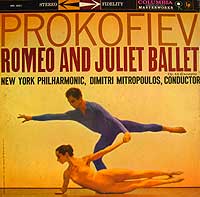 as he did with most of his other ballet scores, in 1936 Prokofiev had extracted two suites of excerpts (and would issue a third in 1946), in which form the music gained most of its vast popularity. Many listeners prefer the excerpts, which excise some of the repetitive and functional music necessary for the narrative development but drag when shorn of the visual interest of the accompanying stage spectacle. Indeed, Prokofiev himself stated that he preferred the more translucent orchestration of the suites, as he had to alter the texture of the original to accommodate the acoustics of the Kirov theatre (where the Russian premiere finally did take place). While some conductors tend to present one or more of the suites intact (usually the second, which contains many of the most popular numbers), others choose among them or select numbers directly from the ballet to fashion their own set of excerpts. Like Prokofiev's suites, the pieces generally pursue musical, rather than narrative, sense, although there are some personal touches – thus, Stokowski presents an unrelievedly grim set of excerpts, while Michael Tilson Thomas goes further – in presenting his generous 78-minute selection in his inaugural recording with the San Francisco Symphony (1995, BMG), he adheres to the pieces' chronological order in the ballet (and thus presents the highlights of the story) and adds some transitional music to bridge the separate pieces in the final act. as he did with most of his other ballet scores, in 1936 Prokofiev had extracted two suites of excerpts (and would issue a third in 1946), in which form the music gained most of its vast popularity. Many listeners prefer the excerpts, which excise some of the repetitive and functional music necessary for the narrative development but drag when shorn of the visual interest of the accompanying stage spectacle. Indeed, Prokofiev himself stated that he preferred the more translucent orchestration of the suites, as he had to alter the texture of the original to accommodate the acoustics of the Kirov theatre (where the Russian premiere finally did take place). While some conductors tend to present one or more of the suites intact (usually the second, which contains many of the most popular numbers), others choose among them or select numbers directly from the ballet to fashion their own set of excerpts. Like Prokofiev's suites, the pieces generally pursue musical, rather than narrative, sense, although there are some personal touches – thus, Stokowski presents an unrelievedly grim set of excerpts, while Michael Tilson Thomas goes further – in presenting his generous 78-minute selection in his inaugural recording with the San Francisco Symphony (1995, BMG), he adheres to the pieces' chronological order in the ballet (and thus presents the highlights of the story) and adds some transitional music to bridge the separate pieces in the final act.
The most radical manifestation 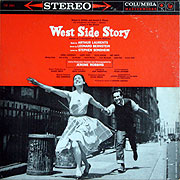  of all Romeo and Juliets – and surely the most popular – arrived in 1957 in the form of a Broadway show. Transposed to the streets of New York, where romance blooms between Tony, the retired leader of the white Jets, and Maria, newly immigrated sister of the head of the rival Puerto Rican Sharks gang, West Side Story was a brilliant collaboration among choreographer Jerome Robbins, librettist Arthur Laurents, lyricist Stephen Sondheim and wunderkind composer/conductor/teacher Leonard Bernstein. Adding to the Shakespearean themes of youth abrading maturity and love battling prejudice were the further conflicts of tradition and progress, entertainment and drama, fantasy and reality. Its many recordings preserve the superb fit between Sondheim's nimble lyrics and Bernstein's immortal music, which soars from violent fury to the tenderness of first love and has gone on to many lives of its own in jazz and pop arrangements. The finest recording remains that of the original Broadway cast for its lean orchestration, unvarnished spirit and the sheer enthusiasm of the ardent young actors. Also worthwhile is the soundtrack album from the 1961 movie version, by which most have now come to know it. (Both were Columbia LPs and now Sony CDs.) To be avoided, though, is Bernstein's disastrous 1984 attempt (on DG) to reinvent his show as grand opera, which emerged as a travesty of the original masterpiece. of all Romeo and Juliets – and surely the most popular – arrived in 1957 in the form of a Broadway show. Transposed to the streets of New York, where romance blooms between Tony, the retired leader of the white Jets, and Maria, newly immigrated sister of the head of the rival Puerto Rican Sharks gang, West Side Story was a brilliant collaboration among choreographer Jerome Robbins, librettist Arthur Laurents, lyricist Stephen Sondheim and wunderkind composer/conductor/teacher Leonard Bernstein. Adding to the Shakespearean themes of youth abrading maturity and love battling prejudice were the further conflicts of tradition and progress, entertainment and drama, fantasy and reality. Its many recordings preserve the superb fit between Sondheim's nimble lyrics and Bernstein's immortal music, which soars from violent fury to the tenderness of first love and has gone on to many lives of its own in jazz and pop arrangements. The finest recording remains that of the original Broadway cast for its lean orchestration, unvarnished spirit and the sheer enthusiasm of the ardent young actors. Also worthwhile is the soundtrack album from the 1961 movie version, by which most have now come to know it. (Both were Columbia LPs and now Sony CDs.) To be avoided, though, is Bernstein's disastrous 1984 attempt (on DG) to reinvent his show as grand opera, which emerged as a travesty of the original masterpiece.
Given the earnestness and solemnity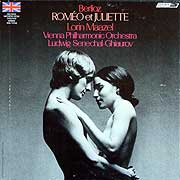 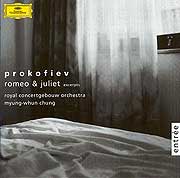 which Berlioz, Gounod, Tchaikovsky, Prokofiev and Bernstein all lavished on their versions of Romeo and Juliet, it seems only fair to note the utter tastelessness of a few crass promoters who chose to market otherwise valid performances of these works with erotic covers that thoroughly falsify the rarified artistic contents. One can only wonder if naïve buyers lured by such pandering wound up cruelly disappointed once they realized that the works were far removed from the lurid promise of the photos. Anyway, without further ado, the first-place award for tactless marketing of Romeo surely goes to London, for their gatefold LP of the Maazel/Vienna Philharmonic version of the Berlioz featuring a lusty topless couple whose thoughts appear to be on more immediate gratification than contemplating rarified aesthetics (but that was only for us lascivious Yankees – the European release had a more "classical" cover). A close second place goes to DG for the slightly more subtle image of rumpled sheets on their Chung/Concertgebouw CD of the Prokofiev ballet. Sure, sex underlies the tale of Romeo and Juliet's intense love, and, no, serious music doesn't have to be humorless, and yet … which Berlioz, Gounod, Tchaikovsky, Prokofiev and Bernstein all lavished on their versions of Romeo and Juliet, it seems only fair to note the utter tastelessness of a few crass promoters who chose to market otherwise valid performances of these works with erotic covers that thoroughly falsify the rarified artistic contents. One can only wonder if naïve buyers lured by such pandering wound up cruelly disappointed once they realized that the works were far removed from the lurid promise of the photos. Anyway, without further ado, the first-place award for tactless marketing of Romeo surely goes to London, for their gatefold LP of the Maazel/Vienna Philharmonic version of the Berlioz featuring a lusty topless couple whose thoughts appear to be on more immediate gratification than contemplating rarified aesthetics (but that was only for us lascivious Yankees – the European release had a more "classical" cover). A close second place goes to DG for the slightly more subtle image of rumpled sheets on their Chung/Concertgebouw CD of the Prokofiev ballet. Sure, sex underlies the tale of Romeo and Juliet's intense love, and, no, serious music doesn't have to be humorless, and yet …
 |
Much of the background information for this piece is derived from Julian Rushton's Berlioz: Roméo et Juliette volume in the Cambridge Music Handbook series (1994); David Cairns's Berlioz (University of California, 1969), his article on Berlioz in The Symphony (Ed. Robert Simpson, Penguin, 1966) and his notes to the Colin Davis LP set (Philips 839 716/7, 1968); D. Kern Holoman's Berlioz (Harvard University, 1989); Ian Kemp's notes to the Gardiner CD set (Philips 454 454, 1998); Irving Kolodin's notes to the Toscanini LP set (RCA LM-7034, 1965); John Burk's notes to the Munch LP set (RCA LDS 6098, 1962); Andrew Huth's notes to the Davis CD set (LSO 0003, 2000); and Alan Evan's notes to Sir Hamilton Harty Conducts Berlioz (Pearl Gemm CD 9485, 1990).

Copyright 2010 by Peter Gutmann
|

 Nonetheless, Cairns presents a compelling description of the intense drama Berlioz depicts: controlled frenzy followed by utter stillness, as chords and long silences seem to listen for any sound; then cold, cavernous solemnity with displaced accents like a heavy heartbeat as Romeo begins to die inside the tomb; Juliet awakening to a pathetic rebirth of the love music struggling to form itself in the void; frenzied and brief joy as fragments of themes from earlier movements shatter and disintegrate; hectic brightness giving the effect of light-headedness, nightmare and imminent collapse; the sublime love theme torn apart, spinning frantically round as if in the distorted memory of a dying brain, clutching at life; and finally annihilation, a violent discord, and then nothingness.
Nonetheless, Cairns presents a compelling description of the intense drama Berlioz depicts: controlled frenzy followed by utter stillness, as chords and long silences seem to listen for any sound; then cold, cavernous solemnity with displaced accents like a heavy heartbeat as Romeo begins to die inside the tomb; Juliet awakening to a pathetic rebirth of the love music struggling to form itself in the void; frenzied and brief joy as fragments of themes from earlier movements shatter and disintegrate; hectic brightness giving the effect of light-headedness, nightmare and imminent collapse; the sublime love theme torn apart, spinning frantically round as if in the distorted memory of a dying brain, clutching at life; and finally annihilation, a violent discord, and then nothingness.